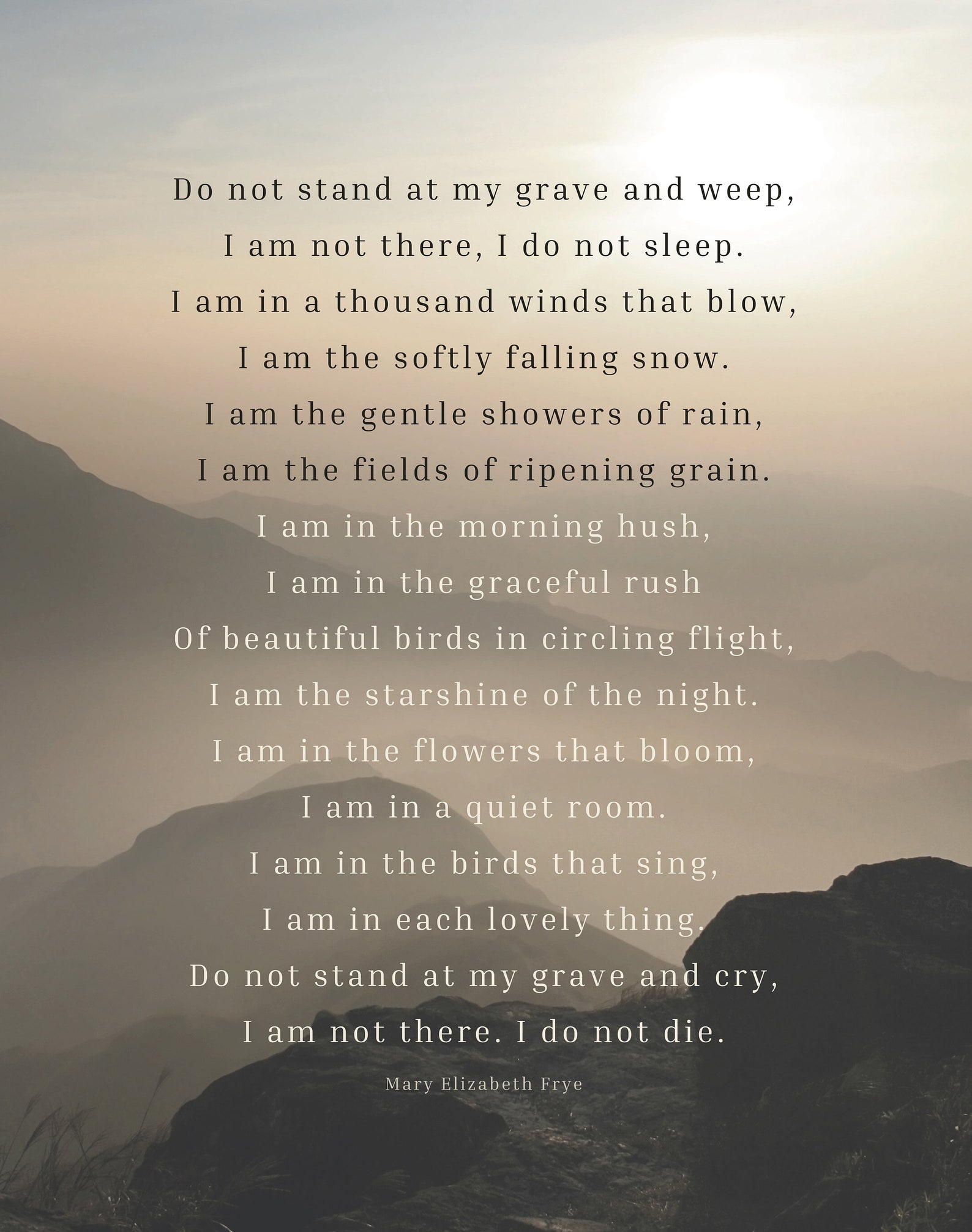
Do Not Stand At My Grave and Weep Instant Download Printable Etsy
The famous poem often read at funerals is written from the perspective of a recently deceased individual. The poem is written in a paired rhyme format and consists only of 12 lines. It starts in the first two lines by telling the audience, composed of those that attend the funeral, to not cry next to the grave, as the deceased is not really.

Do not stand at my grave and weep sears foryougasw
Do not stand at my grave and weep, I am not there, I do not sleep. I am in a thousand winds that blow, I am the softly falling snow. I am the gentle showers of rain, I am the fields of ripening grain. I am in the morning hush, I am in the graceful rush.
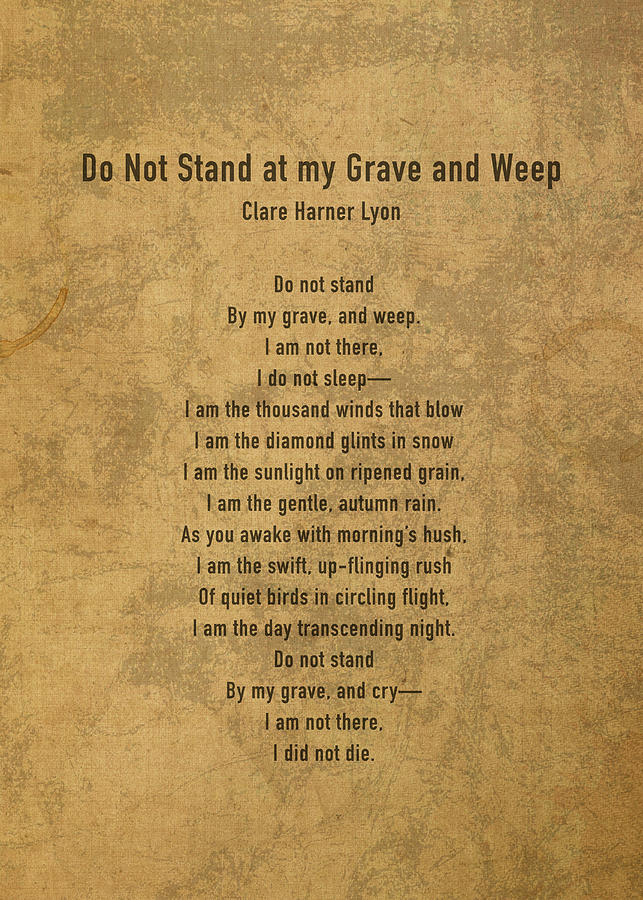
Do Not Stand at My Grave and Weep by Clare Harper Lyon Classic Poem on Parchment Mixed Media by
The First Mourning (1888) by William-Adolphe Bouguereau; William-Adolphe Bouguereau, Public domain, via Wikimedia Commons. Do Not Stand at My Grave and Weep is a bereavement poem, and after its publication, it would go on to be read at many funerals around the world. It is a poem that is noted for its simplicity of message, and one that tends to resonate with many who decide to give it a read.
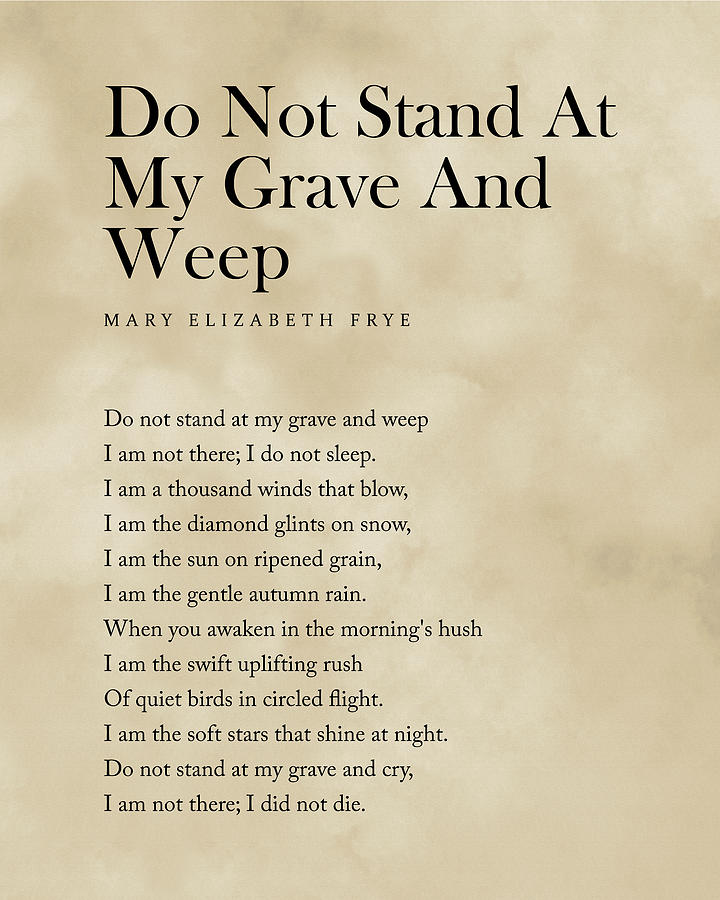
Do Not Stand At My Grave And Weep Mary Elizabeth Frye Poem Literature Typewriter Print 2
Analysis: "Do Not Stand at My Grave and Weep". While countless variants and interpretations of "Do Not Stand By My Grave and Weep" continue to appear, the 1934 publication entitled "Immortality" stands as the earliest printed version. Its effect as a poem of consolation resonates outside academic or even artistic contexts.
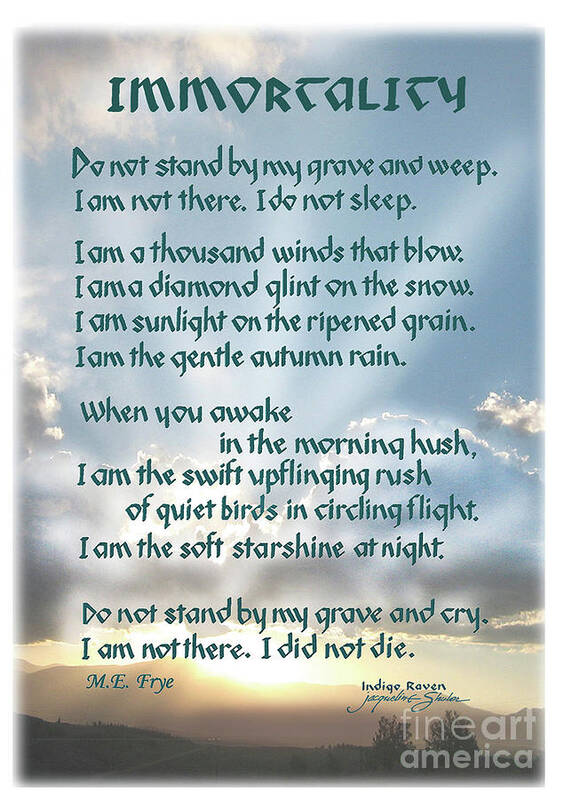
Printable do not stand at my grave and weep poem hanlasem
One of the most popular bereavement poems in English, "Do Not Stand at My Grave and Weep" holds even more allure for its mysterious origins and many reinventions. A traditional, rhyming anti-elegy, the poem uses imagery and metaphor commonly associated with death and rebirth. The poem's voice, a direct address, reaches out to readers in.
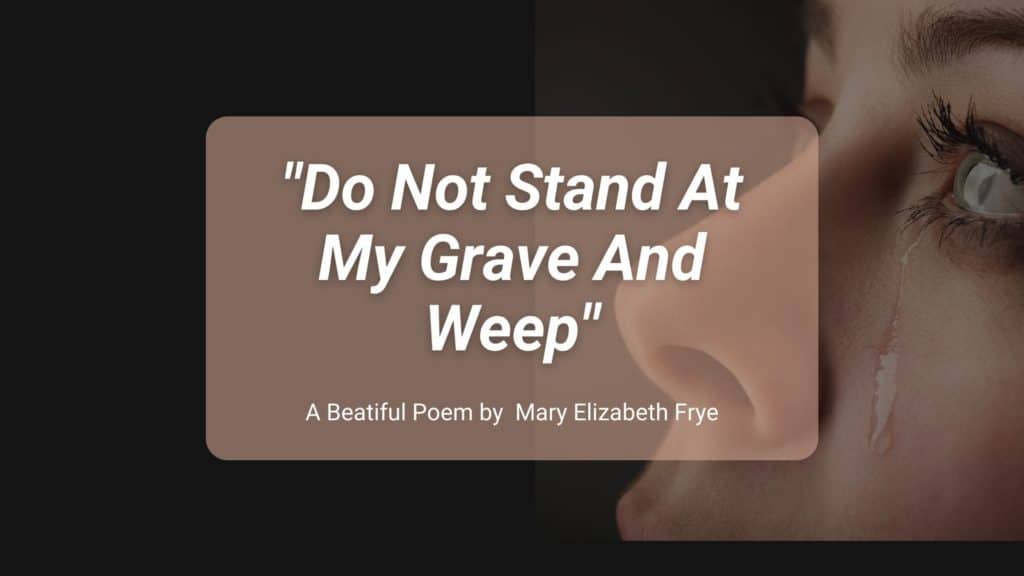
Do Not Stand at My Grave and Weep
Mary Frye is an American poet best known for the piece 'Do Not Stand at My Grave and Weep.' She was born on November 13, 1905 in Dayton. In this touching poem, 'Do Not Stand at My Grave and Weep', by Mary Frye, she speaks of death in a welcoming tone.

Image result for do not stand at my grave and weep poem Scripture quotes, Weeping, Autumn rain
Do Not Stand At My Grave And Weep by Clare Harner - Famous poems, famous poets. - All Poetry Often attributed to Mary Elizabeth Frye, recent research suggests she plagiarized it from Clare Harner. Do Not Stand At My Grave And Weep Do not stand at my grave and weep; I am not there. I do not sleep. I am a thousand winds that blow.

Christ Saranec Do Not Stand At My Grave And Weep Notypisni.cz
'Do Not Stand At My Grave And Weep' was outside the scope of the poll, but following a programme about war poems which featured the poem, 30,000 requests for copies descended on the BBC. Subsequently, a book of the poems that had been chosen as the Nation's Favourite Poems was published, and a decision was made to include 'Do Not Stand At My Grave And Weep' in 'prime, first past the post, poll.
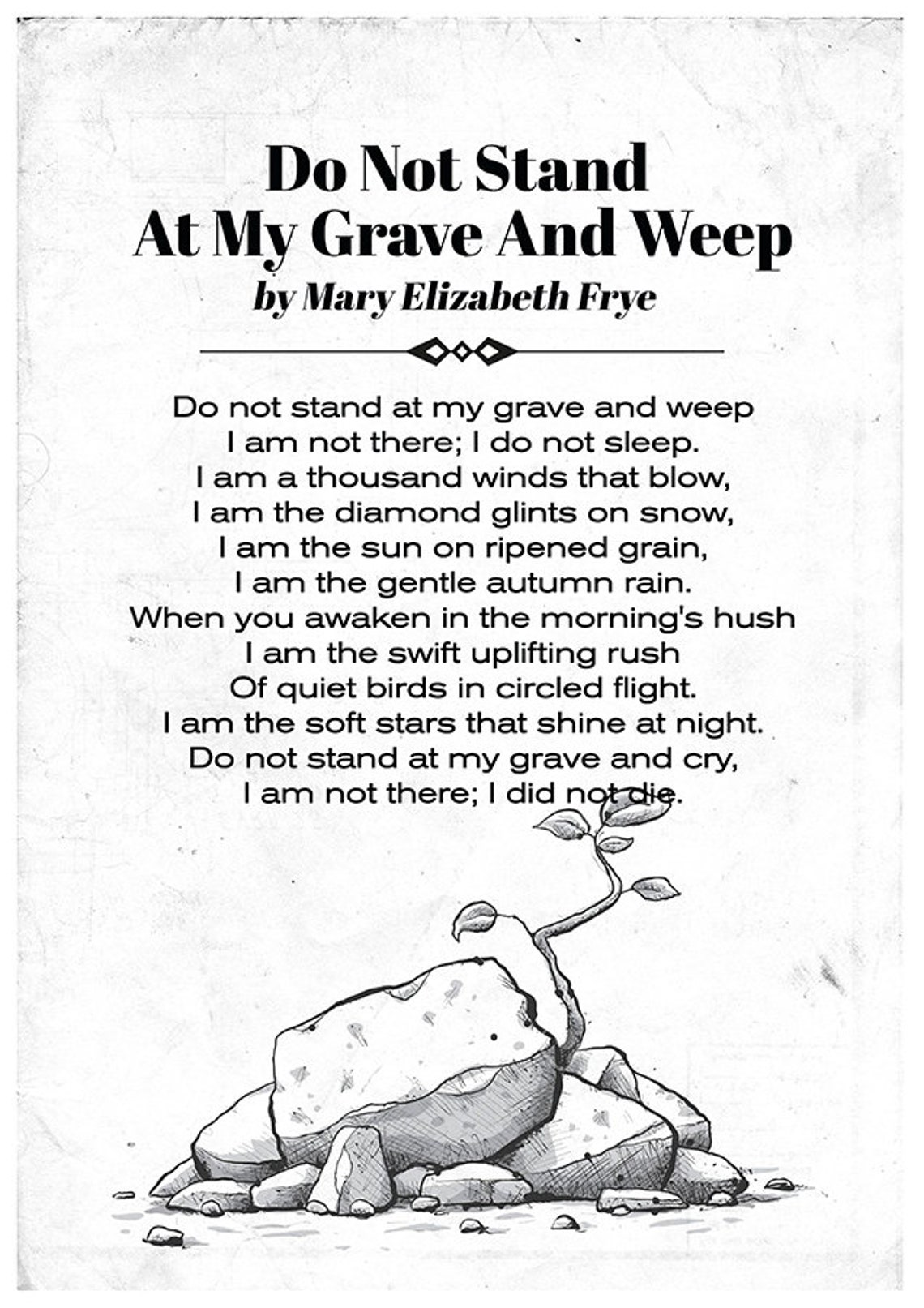
Do not stand at my grave and weep card pohnatural
"Do Not Stand at My Grave and Weep" is a well-known poem, usually recited at funerals. It was written by Mary Elizabeth Frye. Little was known about the author, and it remained a mystery until late in the twentieth century; it was believed that its poet was Mary Elizabeth Frye.

Printable do not stand at my grave and weep poem ascselink
Do Not Stand at My Grave and Weep Famous bereavement poem written by Mary Elizabeth Frye in the 1930s. It says that the people you love are all around you. Do Not Stand at My Grave and Weep Do not stand at my grave and weep, I am not there, I do not sleep. I am a thousand winds that blow. I am the diamond glint on snow.

Pin by Sheila MitchellFavrin on Quotes Pinterest
The poem "Do Not Stand at My Grave and Weep" is a call to action in 12 lines. It's composed of rhyming couplets in iambic tetrameter, though a few lines have extra syllables breaking up the structure to give extra emphasis. To understand what the poem by Mary Elizabeth Frye means, it's best to go line by line. It begins:

Do Not Stand at My Grave and Weep Poem Mary Elizabeth Frye Etsy Australia
Origins Kansas native Clare Harner (1909-1977) first published "Immortality" in the December 1934 issue of poetry magazine The Gypsy. [1] It was written shortly after the sudden death of her brother. Harner's poem quickly gained traction as a eulogy and was read at funerals in Kansas and Missouri.
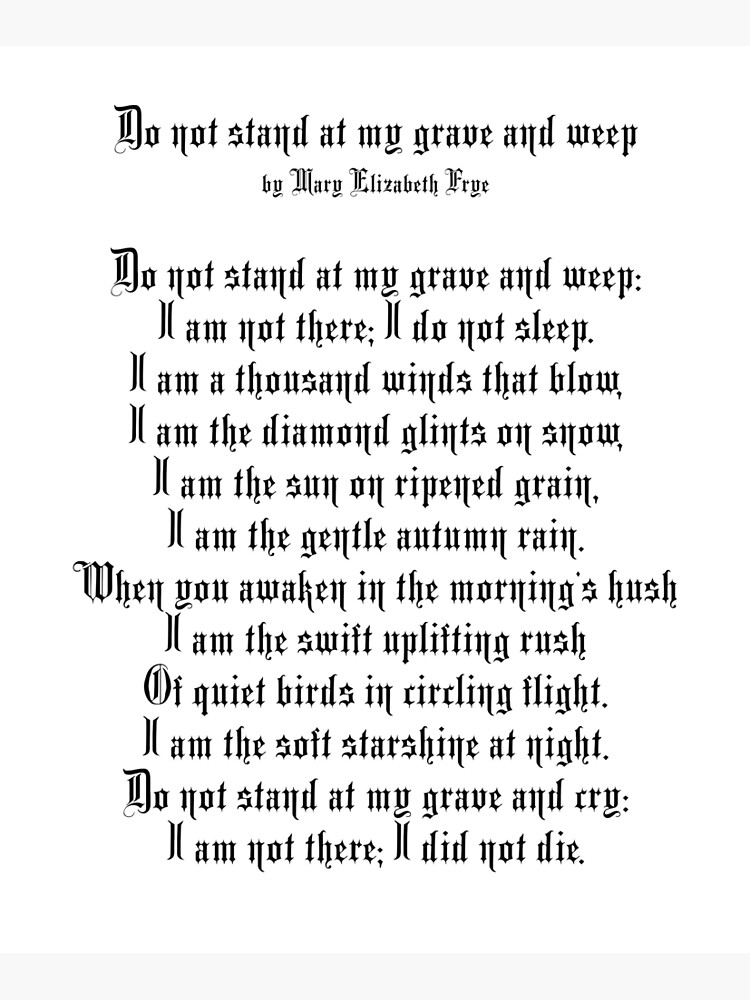
Printable Do Not Stand At My Grave And Weep Poem Printable Word Searches
5. Lacrymosa - Do not stand at my grave and weep. Lacrymosa, dies illa. That day will be one of weeping . Do not stand at my grave and weep, I am not there, I do not sleep. I am a thousand winds that blow, I am the softly falling snow. I am the gentle showers of rain, I am the fields of ripening grain. I am in the morning hush, I am in the.

Do Not Stand At My Grave And Weep im Stretta Noten Shop kaufen
Do not stand at my grave and weep I am not there. I do not sleep. I am a thousand winds that blow. I am the diamond glints on snow. I am the sunlight on ripened grain. I am the gentle autumn rain. When you awaken in the morning's hush I am the swift uplifting rush Of quiet birds in circled flight. I am the soft stars that shine at night.
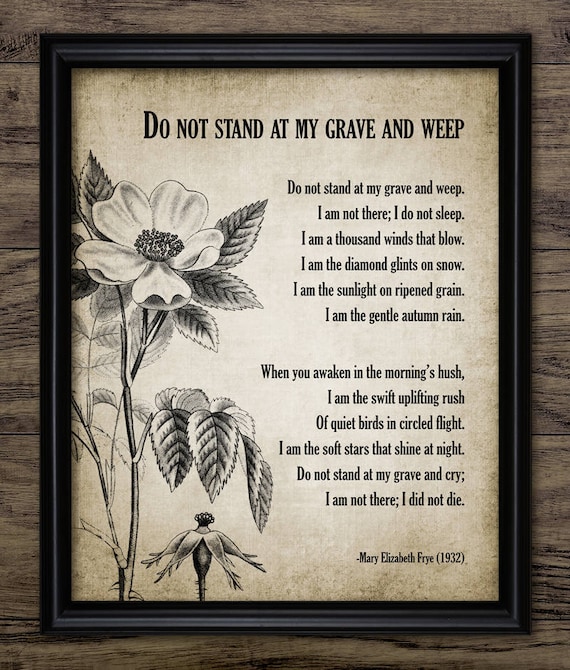
Do not stand at my grave and weep lyrics exchangeaceto
The world-famous poem "Do not stand at my grave and weep" was wildly attributed to Mary Elizabeth Frye but it's originally penned by Clare Harner Lyon. The o.
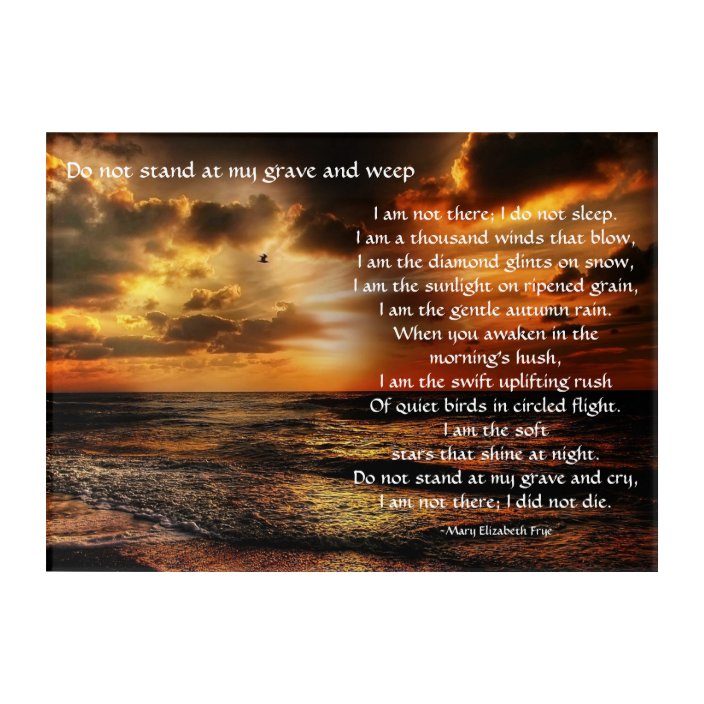
Do Not Stand at My Grave and Weep Poem Acrylic Print
5,200+ Quick-Read Plot Summaries. Downloadable PDFs. Subscribe for $3 a Month. " To Autumn " by John Keats (1819) Many overlapping images connect Keats' poem to "Do Not Stand at My Grave and Weep," along with the themes of immortality and transformation. Wind, grain, and especially birds contribute to mood and supply metaphors in both poems.